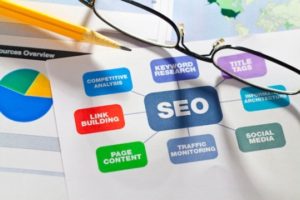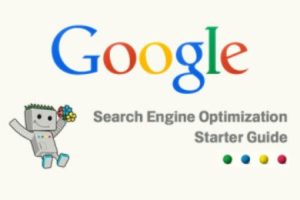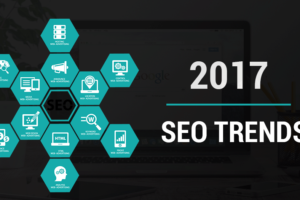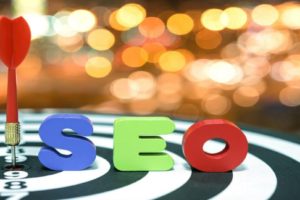Eight Great On-Page SEO Techniques
There are many people who are just starting to blog and many more that have run their own site for a while, that do not know what SEO is and how to implement it.
SEO simply stands for Search Engine Optimisation. This is where you construct the web pages and implement certain techniques to help to rank as high as possible on the search engine result pages or SERPs. The higher your pages can rank on Google or Bing or Yahoo etc. Results pages, the more traffic your website is likely to get.
Now, SEO can be split up into 2 separate categories; On-Page SEO & Off-Page SEO.
On-Page SEO refers to all things that you can do ON the website to help to rank higher, such as page titles, internal linking, meta tags & descriptions, etc.
Off-Page SEO refers to all things that you can do directly OFF your website to help you rank higher, such as social networking, article submission, forum & blog marketing, etc.
In today’s post we would be looking specifically at On-Page SEO and some of most effective ways to increase the page rankings on search engines.
Search Engine Optimisation (SEO)
The following are the Eight Great On-Page SEO Techniques
Eight Great On-Page SEO Techniques
Page Titles
Your page titles are one of most important SEO factors on your website. Each of your pages & posts should have its own unique title, which includes main keywords for that page.
For example, you could write the blog post about new chocolate cake recipe that you have tried. It is therefore crucially important that you can include ‘Chocolate Cake Recipe’ within your post title, perhaps “Easy Chocolate Cake Recipe” or “ Chocolate Cake Recipe for kids”, etc.
This way, whenever someone searches for the Chocolate Cake Recipes in the search engine, your post has better chance of showing up because you have included those keywords.
Meta Descriptions
Many people forget to include the meta descriptions for their pages. These descriptions are an important place to include applicable keywords for your content, as these are used within the search results when your page is listed.
For instance, if we continue to use ‘Chocolate Cake Recipe’ example, then good meta description for that page would include those keywords and related ones. So, This easy chocolate cake recipe is possibly the most delicious, mouth watering, chocolatey cake ever made. would be a great meta description to use, as it is relatively short, whilst containing a number of specific keywords.
Meta Tags
For each of your pages, you can include a set of keywords in form of meta tags. These should be all the applicable keywords of your content, which you would have researched previously.
I use a WordPress plug-in on my websites called ‘All In One SEO Pack’. This allows me to enter all of my meta tag keywords, meta description and page title at the bottom of each of my posts before publishing. This simply inserts all of the information into your page HTML format for you, making your life a little easier.
Page Title, Meta Description and Meta Tags
URL Structure
Including the search engine friendly URLs for each of your pages is highly recommended, as these bring better crawling. Shorter URLs seem to perform better in the search engine results, though that is not the only factor.
URLs that include targeted keywords, also perform better. The location of these keywords can also be the major influence. For example site.com/keyword would perform better than site.com/365/738/subfolder/keyword etc.
As you can see for this page, the URL is http://onlineincometeacher.com/traffic/on-page-seo-techniques/ I have included the keywords that are relevant for this post.
Body Tags (H1, H2, H3, H4, etc.)
When writing your articles, you should break up your content into the smaller sections & paragraphs to make it easier for people to read. These sections can be given heading, which is where H1, H2, H3, H4, etc. tags are used.
Generally H1 tags are reserved for your main page title, with subsequent headings (just like the ones I have used throughout this post) being issued H2, H3, etc. Search engines use these to determine what is important within your content. This is why keyword rich headines are more useful than generic ones. Make sure you write keyword rich headings in the order of priority in H1, H2 and H3 title tags. They are used by many crawlers to differentiate important content.
Keyword Density
Including applicable keywords throughout your content is very important, as it helps search engines work out what your content is about. However, try not to an excessively repeat and overuse keywords just for the search engine robots. This can lead to your website being banned from the search engines.
To avoid this, try to keep your keyword density to roughly 2 to 5%. If you find this hard, get out a thesaurus and broaden your writing vocabulary. This way, you are still writing about the same thing, without risk of being banned.
Image SEO – On-Page SEO
Using images within your content is a great way to make your site more visually appealing and break up boring chunks of text. You can utilise these images to help improve your site SEO.
All your uploaded images have titles, so treat them just the same as your page titles. Including relevant keywords can help people find your site when searching on Google Images.
You can also include Alt Text and Descriptions for your images, making them even more useful with SEO.
Internal Linking
People frequently think that the only links that count are those from other websites. While these links are important, these are not the only important links!
Placing links to your other website pages, is a great way of improving your site and used properly, internal links can be a useful weapon in your SEO arsenal. Not only does it make it much easier for your visitors to navigate around your site and find all of your content, but it also ensures that your site gets properly crawled allowing the search engines to find all of your pages. It also helps to build the relevancy of a page to relevant keywords and phrases, whilst also helping to increase the Google PageRank of your pages.
There are a number of different methods that you can use to improve your internal linking structure. The main being; content links and permanent navigation links.
For bloggers, content links are very useful when used properly. These are links that are placed within your article posts, which redirect people to other relevant pages on your site. For example, this post is focused on increasing traffic to your site, so readers may also find a post on ‘How To Drive Traffic To Your Blog‘ useful. Perhaps other people are just starting out blogging and want to learn more.
Summary
These 8 techniques are just some of the ways that you can improve your on-page SEO. Any one used independently of the others won’t make much difference to your site ranking, however when used together, they can help to improve your site traffic.
They will help to get your pages working better, they will help to get your entire site crawled by search engine spiders, they will help increase the value of internal pages and they will build the relevancy of internal pages to specific keyword phrases.
So, it pays to spend some time implementing these to improve your site! Please leave your comments below & feel free to ask any questions.
The above are the Eight Great On-Page SEO Techniques to get good rank in Google.




